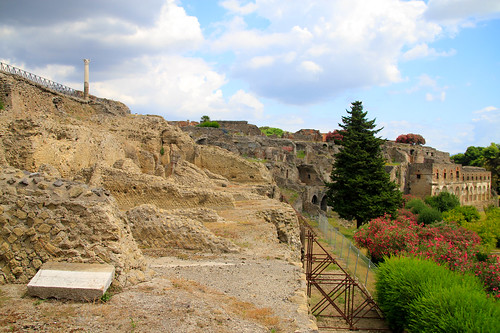
Some structures and columns are still standing, although a fair number had to be put together from chunks that were found strewn around.
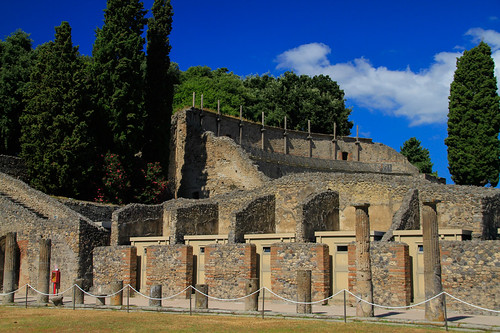
A typical Pompeii street, straight as a razor, and fully sided with houses. There were no trees or parks inside the main town. The raised stones in the middle of the street were used by people to get across when the street was flooded (which was often after rains, as the town was downslope from a big mountain.)
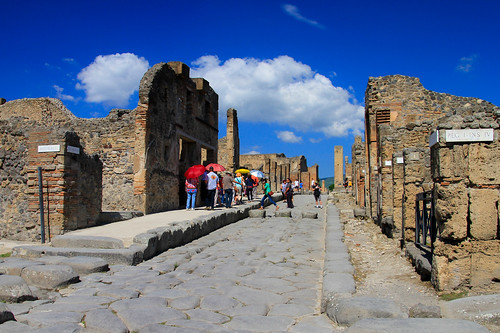
This is something that all tour guides are insistent on pointing out: the pavement still contains indentations left by countless ancient wheels passing between the stepping stones. This is the fourth 2000-year-old pavement that I've been lucky enough to step onto this year (the first three being Old Jerusalem, Petra, and Roman Forum).
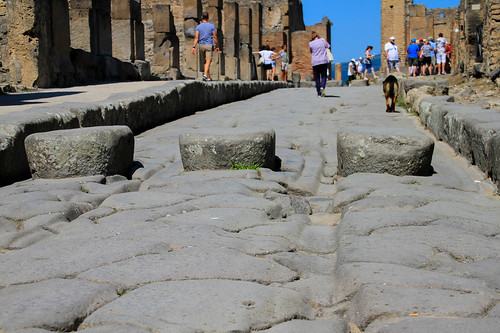
Another typical Pompeii street, more of an alley actually.
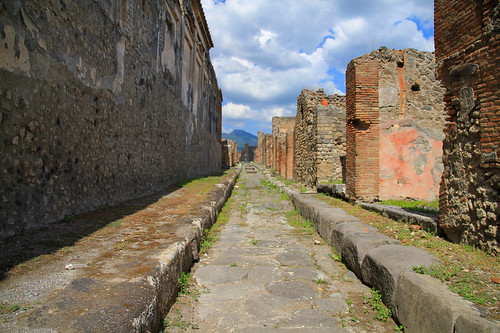
Ruins of a bakery. The arch is above the bread oven. The found 81 loaves of bread still in it ("slightly overdone" as the tour guides say).
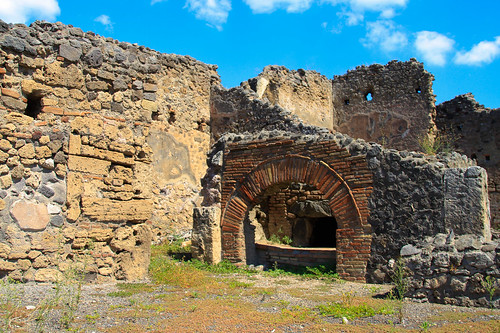
The baths are one of the few buildings that survived with their second stories intact. This was mostly due to the arched supports. The arches were constructed on top of scaffolding until the final keystones were put on the top. I couldn't guess which row of stones were the keystones - can you?
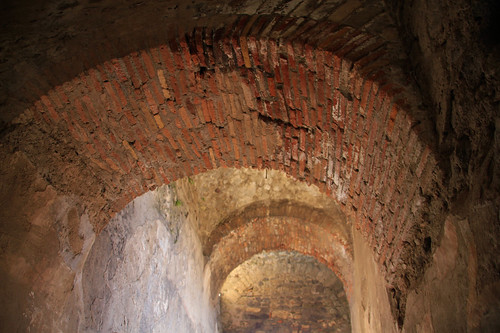
In other places of the baths, the ceiling still holds its ornamental plastering:
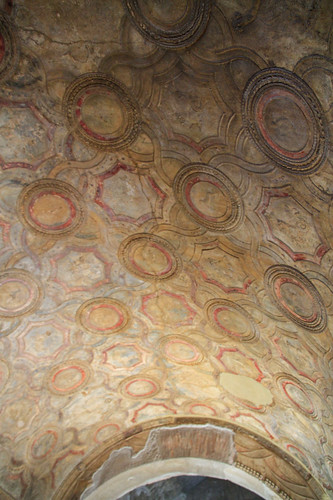
The close-ups of the plastering show how crisp the details are. And these were not machined - all of the lines and pictures were laid out manually!
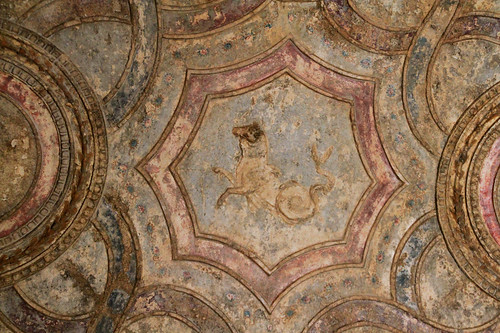
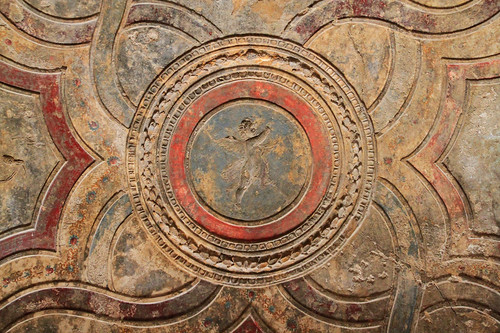
Many of the public places and big houses were richly decorated. None of the interior decorations have survived, but many frescoes did. These were much brighter right after they were first excavated, but even now they still amaze.
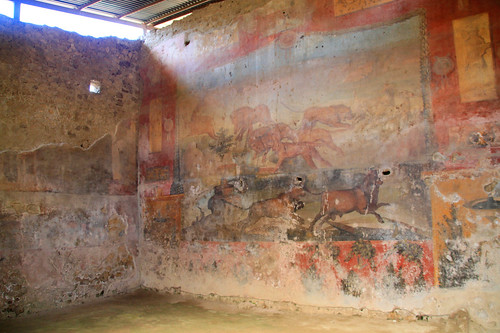
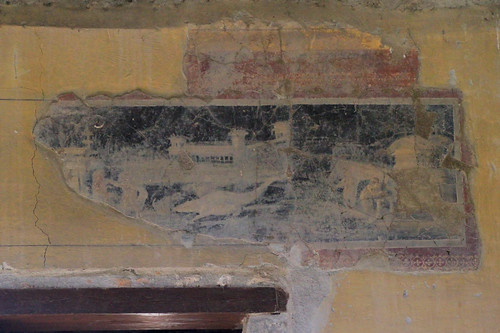
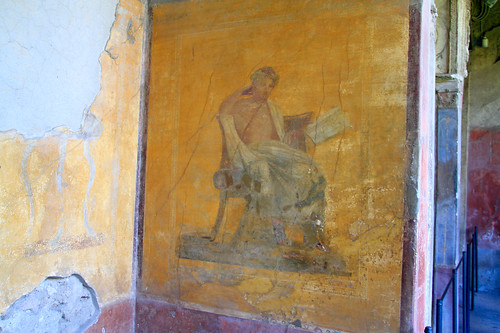
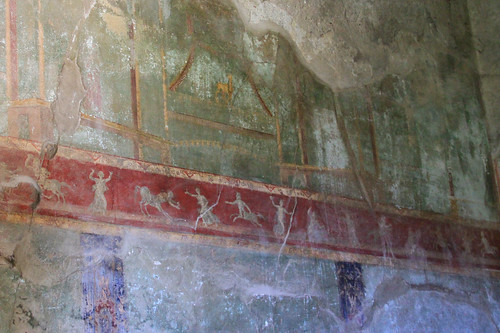
Nameplate for the owner of the house, apparently a big politician in his time.

Graffiti scratches near the entrance to the site re-enforces the concept that Pompeii was a port town.
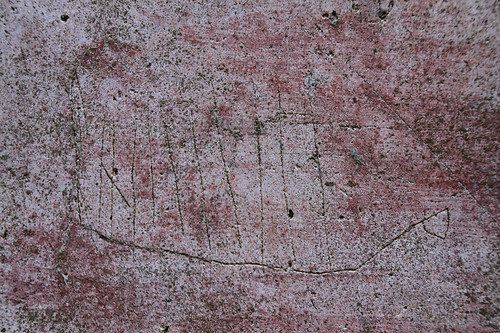
During restorations, pieces of the original masonry were placed into their original places in the restored columns and walls.
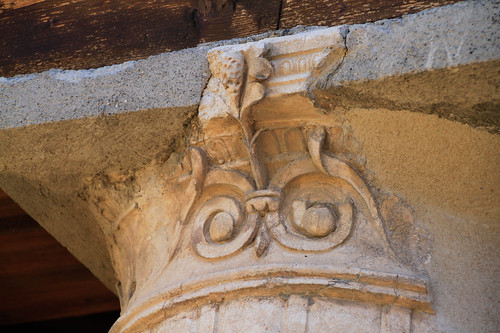
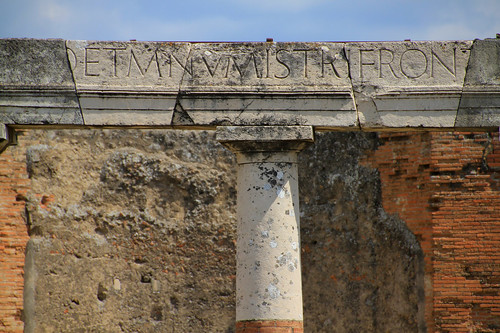
An ominous-in-hindsight view out of the Pompeian forum: the volcano that made it famous. Vesuvius was twice as tall before the eruption. It is still active; the latest eruption was in 1944. However, explosive pyroclastic eruptions such as the one that obliterated Pompeii do not occur that often. They happen only about once every two thousand years.
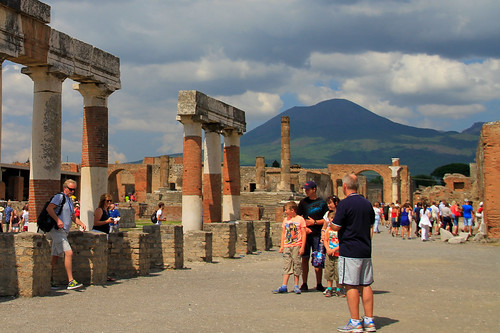

No comments:
Post a Comment